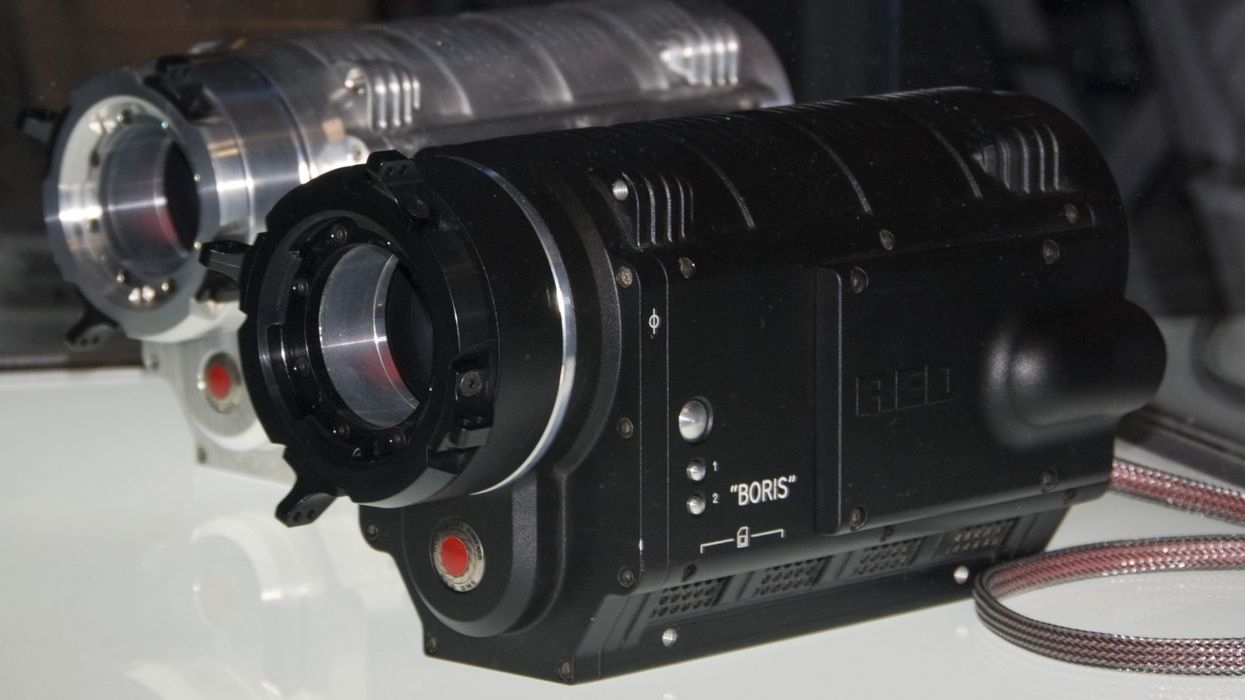RED Pushes Back on Apple Patent Challenge
It all comes down to whether RED's Raw Patent shows not only a unique solution but a time frame indicating that as well.

The crux of Apple's request for an "Inter partes review," or patent challenge, of RED's 314 patent on RedCode Raw, is that the cinema camera company merely combined the prior technologies to create a cleverly worded application surrounding their raw codec, and did not bring anything new to the patent party.
Apple cites the work of both Ari M. Presler and Molgaard, who had developed their own patented portable recording technology and lossless codec for high definition Raw video at resolutions of HD, 2K and 4K respectively. Presler had created a similar portable cinema camera system to the RED One. Molgaard, by contrast, had laid out a processing technique that would achieve nearly lossless compression optimized for data from a Bayer sensor.
“It would have been obvious to combine the specification of the SATA standard… to support the disclosed capability of Presler’s system to store compressed processed images data at a rate of at least about 23 frames per second”.
Apple argues that it would make complete sense for RED to stand on the shoulder's of giants and put these two technologies together to create a system that could record Raw in a cinema camera of RED design, and do it using a SATA interface through their RED MiniMag devices. RED founder Jim Jannard, President Jarred Land, and Redcode Raw inventor Graeme Nattress have published a rebuttal to the US Patent office, stating that the use of prototypes for the RED One Cinema Camera (known as Boris and Natasha) were used to shoot director Peter Jackson for his World War I short "Crossing the Line" in the Spring of 2007.
RED continues to refute the timing by stating that Apple's claim includes a time frame of the Winter of 2007, as well as RED publicly exhibiting the RED One prototypes a year earlier in 2006.

RED included in their rebuttal several photographs of Jannard and company putting together the Boris and Natasha prototypes before the 2007 time frame, along with data on the output of Raw from these cameras. “Upon visual inspection… raw compressed video shot by Boris displayed as visually lossless when decompressed and demosaiced,” Jannard states. “I also recall that the program used to display Boris’s test footage reported that video taken by Boris achieved 4K resolution at 24 frames per second.”
Nattress joins in with his own affidavit that states that he had met Jannard even earlier in the winter of 2005 to discuss how to create a camera system that would record lossless video at up to 4K. “Immediately following my December 2005 meeting with Mr. Jannard, I began working on the design of RED’s first commercial digital motion picture camera that would become known as the RED ONE," Nattress declares. "This work would last all throughout 2006 and into 2007 when we commercially launched the RED ONE video camera."
“Much of my research and design work that went into the RED ONE focused on the second step above, i.e., how to process the raw Bayer-pattern video image data before compression in way would optimize the decompressed and demosaiced output. "
Nattress also stated that during the development of REDCode Raw, that the company deliberately rejected conventional thinking on compression techniques such as JPEG 2000 in favor of an imaging pipeline that would include a Raw Bayer-pattern corrected through an FPGA processing chip by way of a SATA port to RED's MiniMag. The MiniMag is the subject of recent patent exposé by Jinni.Tech claiming their patented MiniMag technology is nothing but off-the-shelf components cobbled together.
There's a lot of tech speak here on Bayer pattern video image data, spread apart pixel values, and gradient reductions, but it really comes down to if RED was developing REDCode Raw before the time windows that Apple is using to challenge their patent, could the patent office have any other choice but to deny Apple's request to vacate patent 314? The issue could also have a ripple effect, as RED's 314 patent was used to defend their IP in a copyright dispute over Raw Recording with Sony, which they were successful in defending.
So there's a lot on the line here for not only Apple and RED, but Sony as well. And if Apple fails, what will be the fate of their popular ProRes Raw codec? And how will that impact other camera designs that are using it? And why did Apple wait so long to challenge it? Well, that's an easy one. Apple developed ProRes Raw recently, and they don't want to pay tribute to RED to make it available.
It's a bold gamble, one that Apple may ultimately come up short on.
Source: EOSHD











